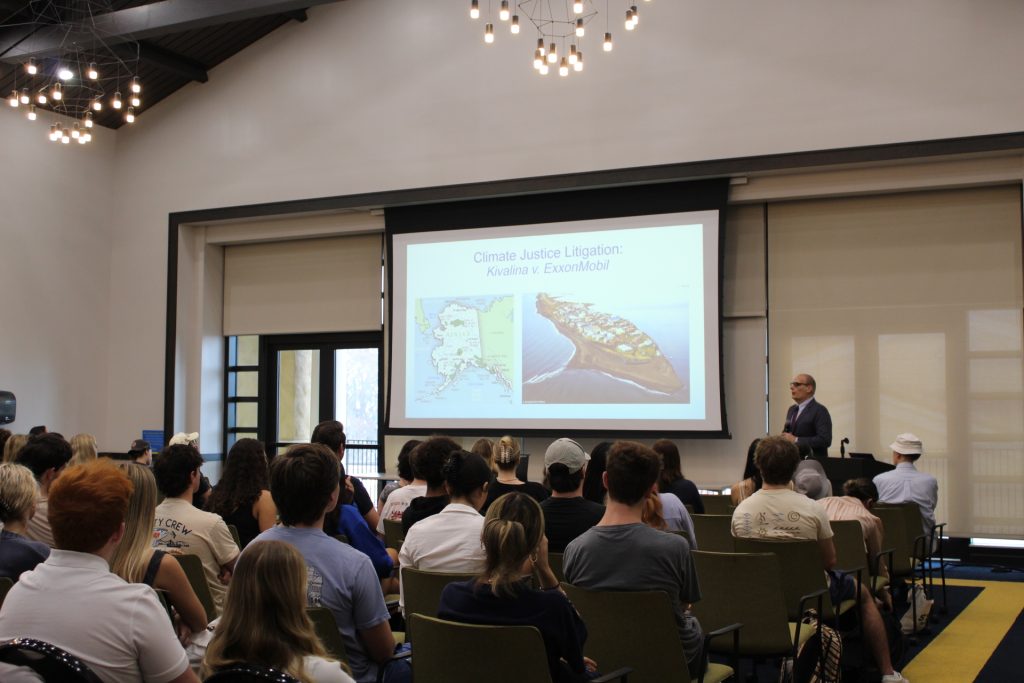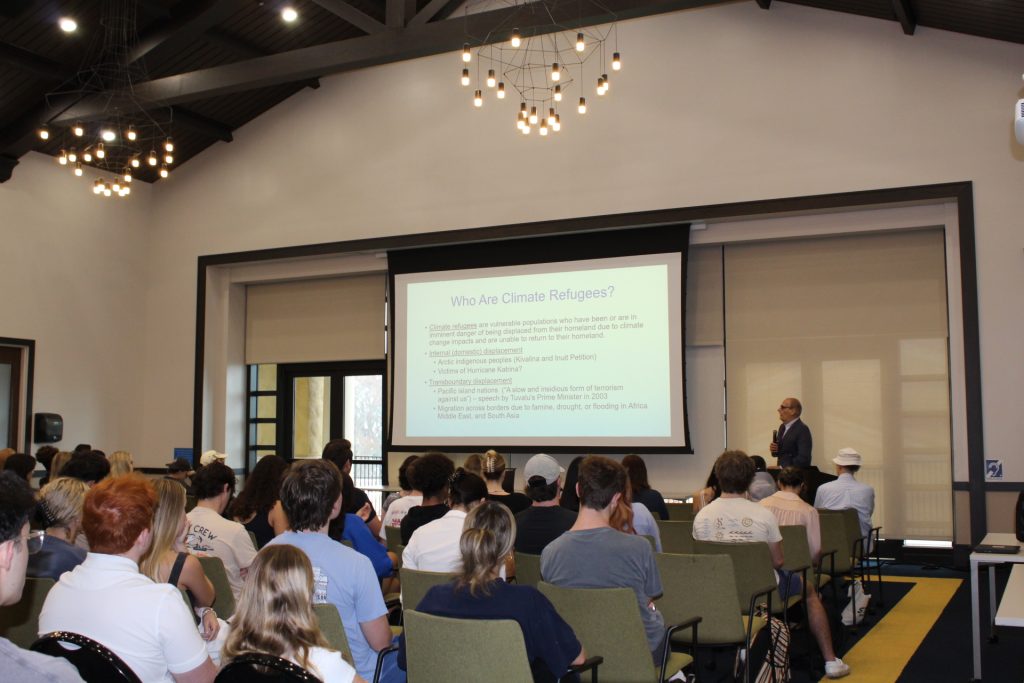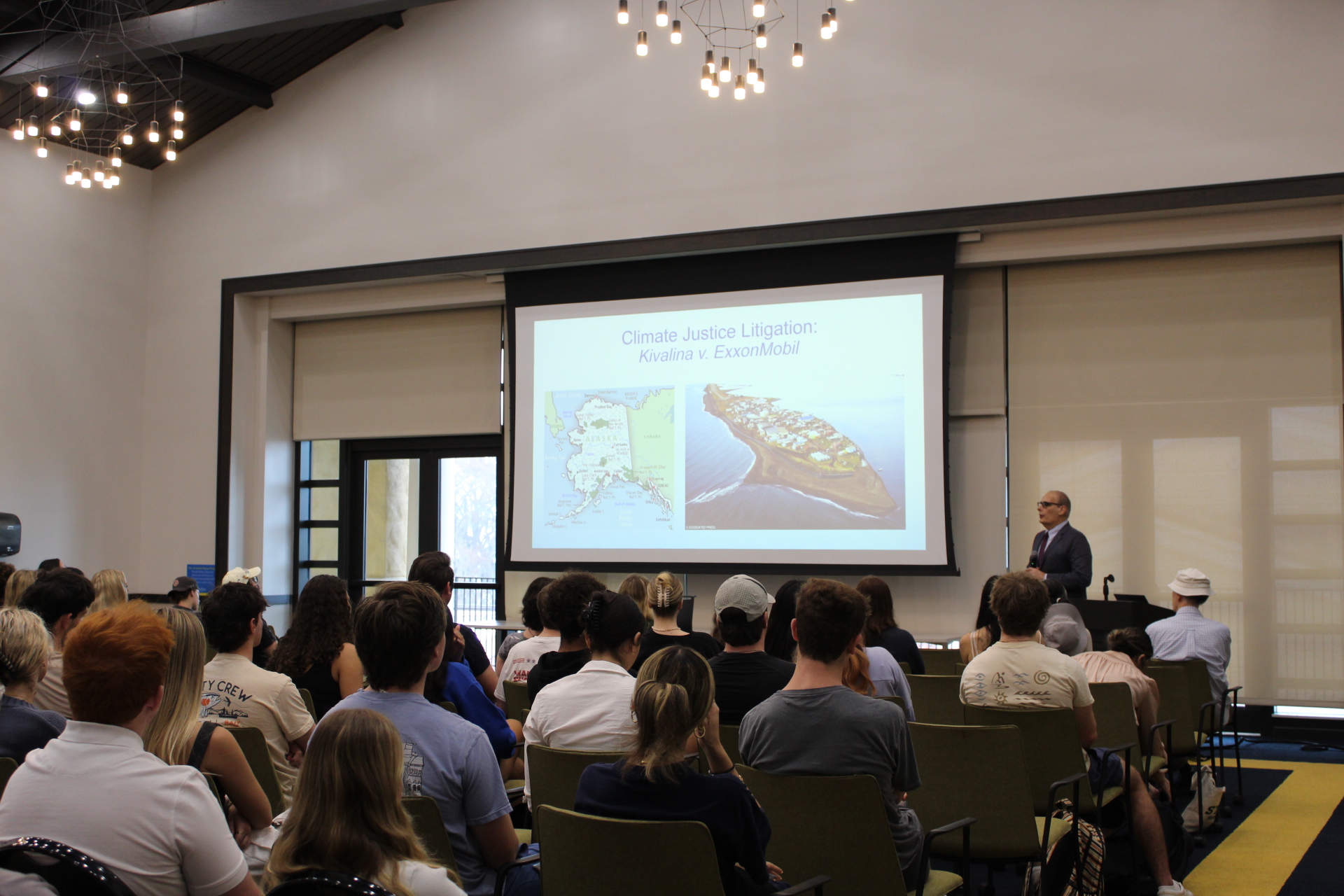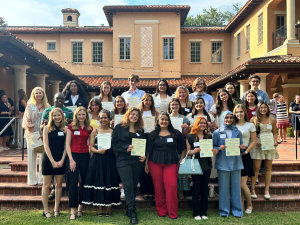
“Inuit are people of the sea ice. If there is no more sea ice, how can we be people of the sea ice?”- Inuit resident of Nain, Nunatsiavut
On Tuesday, February 4, Rollins College welcomed guest lecturer Randall Abate, Assistant Dean for Environmental Law Studies at The George Washington University Law School. With 28 years of experience in international and domestic law, Abate presented “The Plight of Climate Refugees: Rising Seas, Melting Ice, and Inadequate Legal Frameworks” in KWR’s Galloway Room. His lecture explored how rising global temperatures are driving mass displacement, particularly in the Global South, and examined the gaps in both international and domestic legal protections for those forced to flee due to climate-related crises.
Climate refugees are vulnerable populations forced to leave their homes, temporarily or permanently, due to climate-related impacts. For many climate migrants, displacement is not a choice, and returning home may not be an option as environmental conditions worsen. Abate’s lecture highlighted the harrowing reality that by 2050, an estimated 200 million people will be displaced. Yet, there remains no adequate legal framework, internationally or domestically, to address these challenges.
Climate-driven displacement is not confined to a single region or nation. In the United States, victims of Hurricane Katrina and, more recently, the Los Angeles wildfires exemplify communities forced to flee due to environmental disasters. While climate change does not discriminate between human economies, the reality of a climate apartheid is undeniable. Wealthier nations, many of which are among the top emitters, possess the resources to mitigate climate impacts, while people in developing nations are subjected to displacement, financial strain, and the loss of culture and land with little to no support.

Abate highlighted Kivalina, Alaska, a village of 400 Northern Inupiat Alaskans situated on a barrier island 83 miles above the Arctic Circle. Rising sea levels and coastal erosion have rendered the island uninhabitable, forcing the community to relocate. The cost of relocation, estimated at $400 million by the U.S. Army Corps of Engineers, extended far beyond the communities means, with their primary economy built off subsistence hunting. Facing the imminent loss of their home, Kivalina’s residents turned to the legal system for justice. In 2008, they filed a lawsuit against ExxonMobil and other major oil companies, arguing that their contributions to climate change had directly led to the island’s destruction. The case was dismissed by the U.S. District Court, ruling that the regulation of greenhouse gas emissions was a political issue not a legal one. Additionally, the court cited the lack of precise carbon attribution, making it difficult to directly link the defendants’ actions to the erosion of Kivalina, and the displacement of its people. While advances in carbon attribution science have since improved, significant legal hurdles remain in establishing protections for climate migrants.
The Kivalina vs. Exxon Mobile lawsuit is an example of political question doctrine, which prevents federal courts from ruling on issues deemed political rather than legal. This doctrine often prevents climate-related cases from being resolved through the judicial system, leaving them to be addressed through federal legislation or congressional action. This is just one of the significant hurdles in establishing a legal regime within the United States that is equipped to address climate displacement.
Internationally, establishing a legal regime regarding climate migration proves to have its own complexities, even in the simple act of defining climate refugees. The 1951 Refugee Convention defines legal refugee status and the protections afforded to refugees, but climate migrants and their forcible displacement are not included in this definition. The solution is not as simple as redefining what it means to be a migrant. In attempting to fit climate migrants within the existing framework for refugees, the protections for traditional refugees would not only weaken but would also fail in providing meaningful solutions for those displaced by climate change.
Abate concluded his lecture by exploring potential solutions to these domestic and international legal gaps, including the creation of a new treaty specifically for climate refugees and increased international funding for global interventions. However, key questions remain: How should a climate refugee be defined? How should both internal and transboundary displacement be addressed? What obligations do host nations have toward climate refugees?
Following the lecture, Abate hosted a pre-law advising session, answering students’ questions about law school, potential career paths, and the value of a Washington, D.C.-based legal education. Considering a career in law or have further questions about climate migration? Abate welcomes inquiries at Randall.abate@law.gwu.edu.











Comments are closed.